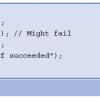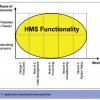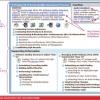Process
Better Software Magazine Articles
|
Out of the Rut Are you bored? Do feel as if all you do is repeat heavily scripted tests and as a result you aren't learning, discovering new problems, or finding bugs? These nine heuristics can help you get out of your rut and take back control of your testing process. |
||
 |
A ''D'' in Programming In certain company, the topic of favorite programming languages can elicit the same response as other taboo subjects, such as religion and politics. But, Chuck's going out on a limb to discuss his new favorite language, D, and some of its best features, such as its being strongly typed and compiling to native code, yet it is garbage collected. |
|
|
Where Do I Go From Here?—Professional Growth for Software Testers Most professionals have a detailed career ladder upon which to climb and grow their careers. But in many test organizations that ladder has only one rung—and it leads to management. If management isn't your path of choice, these tips can help you market yourself and add value to your career while you build your own technical career ladder. |
||
|
Learning the Hardware Lessons Systems and software aren't just about correctness; they are also about solving problems for people. According to the context-driven software testing movement, a problem isn't solved if the product doesn't work. Michael's experience in a hardware store drives that lesson home. |
||
|
How Much Is Enough?—Exploring Exploratory Software Testing Exploratory testers design and execute tests in the moment, starting with an open mission and investigating new ideas as they arise. But how do we know when to stop? The first step is to recognize that we can't know when we're done, because any approach to answering the stopping question is necessarily heuristic. |
||
 |
Mind the Gap The requirements composition table is an effective technique comprising six steps that will help you assess an application's test coverage and identify gaps in your test suite even if you don't have any software requirements specifications. |
Yuri Chernak
February 27, 2008 |
|
Software Development Worst Practices While some debate which, if any, industry practices deserve the designation "best practices," this tongue-in-cheek look at the horrors of some of software's "worst practices" drives home the value of the good ones and may help us improve the quality of our software. |
||
|
|
The Other Side of Complexity Software development has always been an exercise in managing complexity because there appears to be no end to the problems to which we can apply automatic computation. It has progressed as a discipline as good minds have created abstractions that transform that complexity into simplicity. |
|
|
The Hawthorne Effect Ever wondered what productivity experiments on factory workers in the early twentieth century have in common with today's adoption of agile practices? Lee sheds some light on the "process of process" and the importance of retrospectives as catalysts for change. |
||
 |
New and Improved: Get User Buy-In on Process-Improvement Initiatives When these information architects were assigned to a team that was struggling to achieve CMMI Level 2, they found little user buy-in for the new processes. Find out how introducing user-centered design to the project got everyone involved in the design process and increased the users' satisfaction in the end product. |
Ember R. DeBoer
December 28, 2007 |







